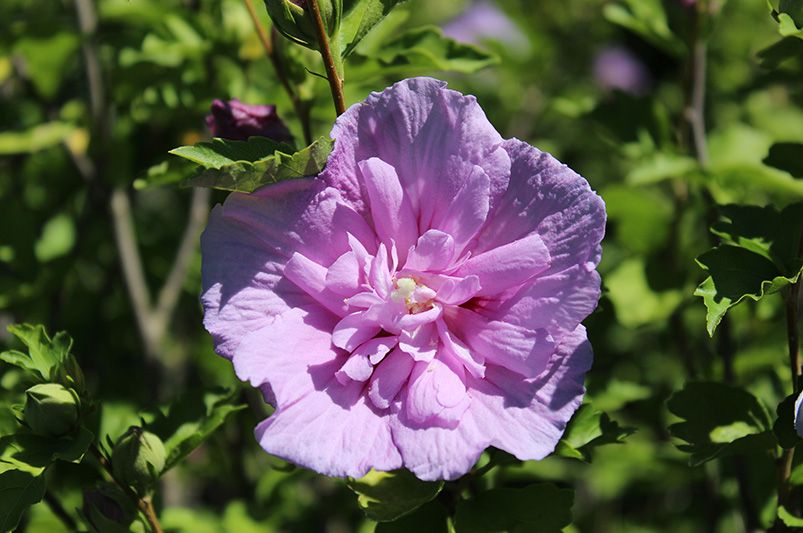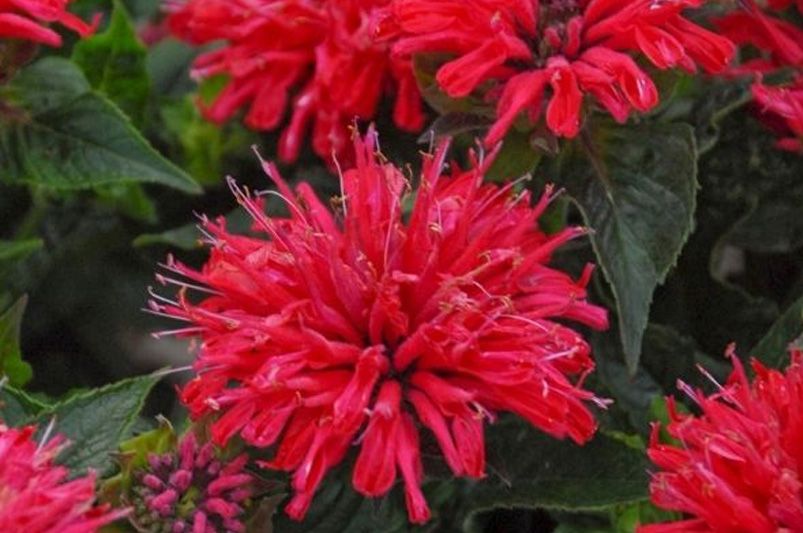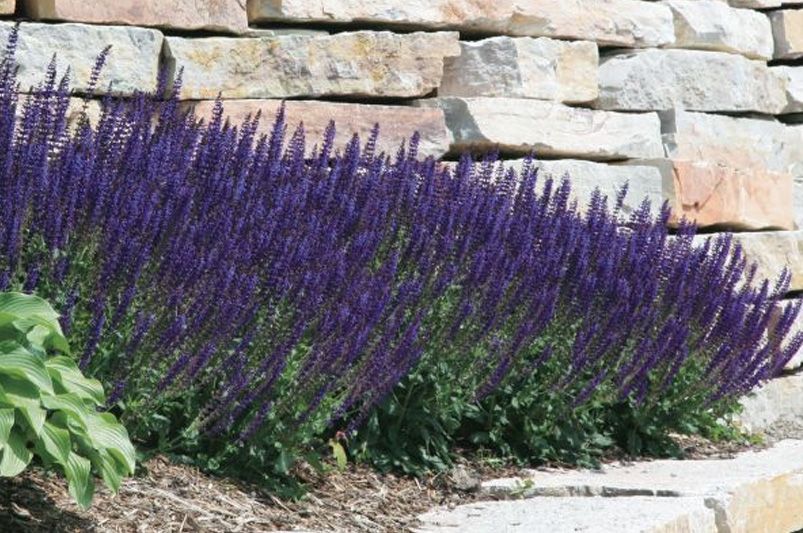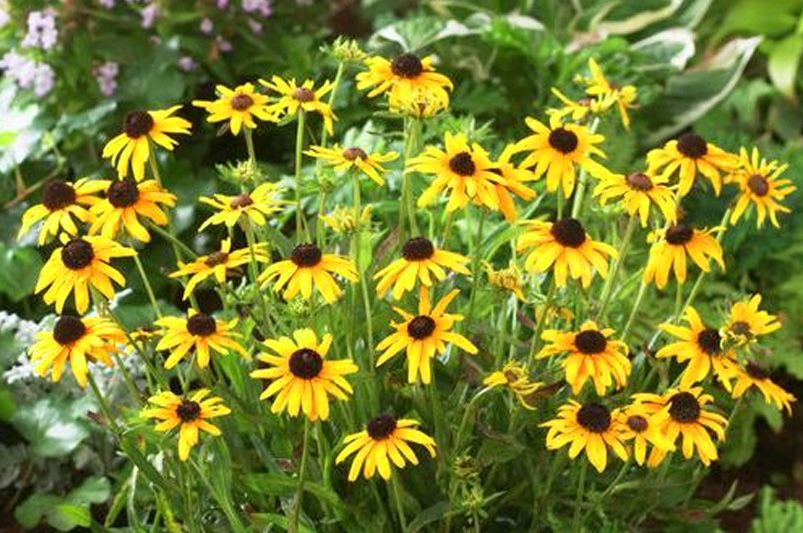
Austin Landscaping Ideas for Your Yard
Published: 31/07/2024 | Updated: 31/07/2024
Austin has a distinct climate in which only specific groups of plants can survive and thrive. Though many beginning gardeners might find it too difficult a place to plant a great, vibrant garden, most of the time, it is a difficulty that arises from trying to force unsuitable plants on the landscape. Once you work with what already works within that climate, you’ll find many doors and different designs opening up for you. In this guide, we’ll introduce you to some of our favorite plants that will bring life and color to your Austin landscape.


Plants for Your Austin Landscape
Those seven plants will show you the immense potential of Austin landscaping. Their variety in colors and shapes will be a vibrant rapture in your garden. We’ll walk you through all the information you need to know about them.

Hibiscus Lavender Chiffon
Hibiscus Lavender Chiffon is a cultivar of the hardy hibiscus plant (Hibiscus), known for its elegant and delicate lavender-colored blooms. Here’s a detailed overview of this plant:
- Appearance: The Lavender Chiffon Hibiscus is celebrated for its large, showy flowers that feature a soft lavender or pastel purple hue. The blooms are often semi-double or fully double, which means they have extra layers of petals, creating a fuller, more ruffled appearance. The flowers can measure up to 8-10 inches in diameter. The plant also has dark green, broad leaves that provide a rich backdrop to the vibrant flowers.
- Growth Habit: This hibiscus typically grows as a perennial shrub, reaching heights of about 3-5 feet and a similar spread. It has a bushy, upright growth habit and can develop a somewhat rounded shape.
- Hardiness: Lavender Chiffon Hibiscus is hardy in USDA Hardiness Zones 4 to 9. This range allows it to thrive in various climates, from cooler northern regions to more temperate areas.
- Care Requirements: The plant prefers full sun but can tolerate partial shade. It thrives in well-drained soil and benefits from regular watering, especially during dry spells. Mulching around the base can help retain soil moisture and regulate temperature. Pruning is generally done in late winter or early spring to shape the plant and remove dead or damaged growth.
- Blooming Period: Lavender Chiffon Hibiscus typically blooms from mid-summer to early fall, providing an extended period of color in the garden. The blooms are often large and conspicuous, making them a focal point in garden beds or borders.
- Uses: This hibiscus is ideal for garden beds, borders, and as a specimen plant. Its large, colorful flowers make it an excellent choice for adding a dramatic splash of color. It can also attract pollinators like butterflies and hummingbirds to the garden.
- Pest and Disease Resistance: Lavender Chiffon Hibiscus is generally resistant to pests and diseases, though it can occasionally face issues with aphids or powdery mildew, especially in humid conditions. Ensuring good air circulation and avoiding overhead watering can help mitigate these problems.
Hibiscus Lavender Chiffon is a beautiful and versatile plant that adds a touch of elegance and vibrant color to gardens. It is a popular choice for gardeners looking to enhance their landscape with showy blooms.
Little Suzy Black Eyed Susan
Little Suzy Black-eyed Susan (Rudbeckia hirta 'Little Suzy') is a cultivar of the Black-eyed Susan, known for its compact size and vibrant flowers. Here’s a detailed overview of this plant:
- Appearance: Little Suzy Black-eyed Susan features bright, cheerful blooms with golden-yellow petals and dark brown centers, characteristic of Black-eyed Susans. The flowers are typically smaller than other varieties, and the plant has a more compact growth habit. The blooms are generally around 2-3 inches in diameter.
- Growth Habit: This cultivar is known for its dwarf or compact size, reaching a height of about 12-18 inches. Its compact growth makes it suitable for smaller garden spaces, containers, or as a border plant. It has a bushy, dense appearance forms a tidy mound of foliage.
- Hardiness: Little Suzy Black-eyed Susan is hardy in USDA Hardiness Zones 4 to 9. This range allows it to thrive in various climates, from cooler northern regions to more temperate areas.
- Care Requirements: The plant prefers full sun but can tolerate partial shade. Once established, it thrives in well-drained soil and is relatively drought-tolerant. Regular watering is beneficial, particularly during dry periods. Deadheading spent flowers can encourage continued blooming and improve the plant’s appearance.
- Blooming Period: Little Suzy Black-eyed Susan typically blooms from mid-summer to fall. Its bright, daisy-like flowers provide a long-lasting splash of color in the garden.
- Uses: Due to its compact size, Little Suzy Black-eyed Susan is ideal for use in smaller garden beds, containers, and borders. It can also add color and texture in mixed perennial gardens. The plant attracts pollinators like bees and butterflies, enhancing its value in a wildlife-friendly garden.
- Pest and Disease Resistance: This cultivar is generally resistant to most pests and diseases. However, it may occasionally encounter issues such as aphids or powdery mildew. Ensuring good air circulation and proper garden practices can help manage these issues.
Little Suzy Black-eyed Susan is a popular choice for gardeners seeking a compact, colorful plant that offers the classic charm of Black-eyed Susans in a smaller, more manageable size.

Pardon My Cerise Bee Balm
Pardon My Cerise Bee Balm (Monarda 'Pardon My Cerise') is a cultivar of bee balm known for its vibrant, eye-catching flowers and compact growth. Here’s a detailed overview of this plant:
- Appearance: Pardon My Cerise Bee Balm is distinguished by its bright cerise or hot pink flowers. The blooms are tubular and arranged in dense, rounded clusters, creating a bold and vibrant display. The plant also features aromatic, dark green leaves that add to its overall appeal. The flower clusters are often slightly rounded, giving the plant a full and lush appearance.
- Growth Habit: This variety is more compact than traditional bee balm, reaching a height of about 12-18 inches with a similar spread. Its shorter stature makes it suitable for smaller garden spaces and containers. The plant has a bushy, clump-forming growth habit.
- Hardiness: Pardon My Cerise Bee Balm is hardy in USDA Hardiness Zones 4 to 9. This range allows it to thrive in various climates, from cooler to temperate regions.
- Care Requirements: The plant prefers full sun to partial shade and thrives in well-drained, moist soil. Regular watering is essential to maintain its health and flowering ability. Deadheading spent blooms extend the blooming period and improve its appearance. Additionally, adequate spacing and good air circulation can help prevent powdery mildew, a common issue with bee balm.
- Blooming Period: Pardon My Cerise Bee Balm typically blooms from mid-summer to early fall. The vibrant flowers add color to the garden during the growing season, and the plant often continues to bloom for several weeks.
- Uses: This bee balm is versatile in the garden, making it suitable for beds, borders, and containers. Its bright flowers attract pollinators such as bees, butterflies, and hummingbirds, making it valuable to a pollinator-friendly garden. Its compact size makes it ideal for smaller spaces where larger bee balm varieties might be too overwhelming.
- Pest and Disease Resistance: While Pardon My Cerise Bee Balm is generally resistant to most pests, powdery mildew can sometimes affect it, particularly in humid conditions. Good garden practices, such as proper spacing and avoiding overhead watering, can help manage and reduce the risk of mildew.
Pardon My Cerise Bee Balm is valued for its vibrant flower color, compact size, and ability to attract pollinators. It is popular for adding bold colors and attracting wildlife to the garden.

May Night Salvia
May Night Salvia (Salvia nemorosa 'May Night') is a popular and highly-regarded cultivar of the perennial salvia plant, known for its striking floral display and robust nature. Here’s a comprehensive look at this plant:
- Appearance: May Night Salvia features tall, dense spikes of deep violet to indigo-blue flowers. The flowers are tubular and arranged in whorls along the flower spikes, creating a vertical, spiky effect that adds color and interest to the garden. The plant’s foliage is typically dark green, and the leaves are often lance-shaped and aromatic.
- Growth Habit: This salvia typically grows to a height of 18-24 inches, with a similar spread. It has a compact, bushy growth habit and forms clumps. The flower spikes rise above the foliage, providing a striking vertical element in garden beds and borders.
- Hardiness: May Night Salvia is hardy in USDA Hardiness Zones 4 to 8. This wide range of hardiness makes it adaptable to various climates, from cooler northern regions to more temperate areas.
- Care Requirements: This plant thrives in full sun but can tolerate partial shade. It prefers well-drained soil and is relatively drought-tolerant once established. Regular watering during dry periods will help maintain its health and flowering. Deadheading spent blooms can encourage additional flowering and help keep the plant’s appearance. Providing good air circulation to prevent potential issues with powdery mildew is also beneficial.
- Blooming Period: May Night Salvia blooms from late spring to early summer, with the flowers often continuing into midsummer. The vibrant flower spikes provide a long-lasting splash of color in the garden.
- Uses: This salvia is versatile in the landscape, making it suitable for garden beds, borders, and containers. Its tall flower spikes add vertical interest and color to flower beds. It’s also an excellent choice for pollinator gardens, as its flowers attract bees, butterflies, and hummingbirds.
- Pest and Disease Resistance: May Night Salvia is generally resistant to pests and diseases. However, it can occasionally encounter powdery mildew, especially in humid conditions. Proper spacing, good air circulation, and avoiding overhead watering can help prevent these issues.
Overall, May Night Salvia is valued for its striking blue flowers, reliability, and ease of care. It is a popular choice for adding bold color and attracting pollinators to various garden settings.

Luminary Opalescence Tall Garden Phlox
Luminary Opalescence Tall Garden Phlox (Phlox paniculata 'Luminary Opalescence') is a garden phlox cultivar known for its striking, opalescent flowers and tall growth habit. Here’s a detailed overview of this plant:
- Appearance: Luminary Opalescence Tall Garden Phlox features prominent, eye-catching flower clusters that display a soft, pastel color palette with shades of pink, lavender, and white. The flowers are often slightly iridescent, giving them a pearly sheen. The plant's foliage is typically dark green, providing a contrast to the colorful blooms.
- Growth Habit: This phlox variety grows tall, typically reaching heights of about 3-4 feet, with a similar spread. It has a bushy, upright growth habit and produces dense clusters of flowers atop sturdy stems, which help support the heavy flower heads.
- Hardiness: Luminary Opalescence is hardy in USDA Hardiness Zones 4 to 8. This makes it suitable for various climates, from cooler northern regions to more temperate areas.
- Care Requirements: The plant thrives in full sun to partial shade and prefers well-drained, moist soil. Regular watering is essential to maintain its health and flowering ability, particularly during dry periods. Deadheading spent blooms can encourage continued flowering and enhance the plant’s appearance. Phlox may be prone to powdery mildew, so ensuring good air circulation and avoiding overhead watering can help mitigate this issue.
- Blooming Period: Luminary Opalescence Tall Garden Phlox blooms from mid-summer to early fall. Its long-lasting flower clusters provide vibrant color throughout the growing season.
- Uses: Due to its height, this phlox is ideal for garden beds, borders, and backdrop plants. Its striking flower clusters make it a focal point in the garden. It also works well in mixed perennial gardens and attracts pollinators like butterflies and bees.
- Pest and Disease Resistance: While generally resistant to many pests, garden phlox can occasionally suffer from powdery mildew, especially in humid conditions. Good garden practices, such as providing adequate spacing for air circulation and avoiding excessive moisture, can help prevent and manage these issues.
Luminary Opalescence Tall Garden Phlox is valued for its beautiful, iridescent flowers and robust growth. It adds a touch of elegance and color to the garden, making it a popular choice for enhancing garden beds and landscapes.
This guide details our favorite varieties for an Orlando landscape so you can choose your favorite and know your options. We recommend planting those different varieties together for a vibrant and diverse landscape.
While shopping, take advantage of our 30% discount and gift your friends, neighbors, or family a lovely plant. If you’re not sure what to choose, consider our gift cards.
Taking care of your landscape and developing it is a life-long process—a joyful one. That is, if you're always developing and building on a strong foundation that you're happy with. However, if you have a problem with the fundamental design, then trying to change the plants or other small aspects would be like treating the symptoms rather than the problem.
If this is your case, then have no worries.



